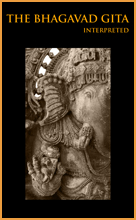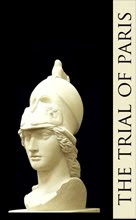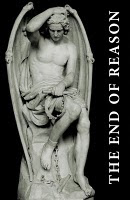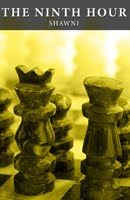 Aurangzeb said, “You say that Rama died and the world strayed. Then Krishna arose and restored religion. And Krishna died and the world strayed again until Buddha appeared. You have spoken of Rama and Krishna at length, but have said nearly nothing of the Buddha. Tell me, if you can, which stories and scriptures of the Buddha are authentic and how they are consistent with the journey of Rama and the teachings of Krishna.”
Aurangzeb said, “You say that Rama died and the world strayed. Then Krishna arose and restored religion. And Krishna died and the world strayed again until Buddha appeared. You have spoken of Rama and Krishna at length, but have said nearly nothing of the Buddha. Tell me, if you can, which stories and scriptures of the Buddha are authentic and how they are consistent with the journey of Rama and the teachings of Krishna.”The boy said, “If you had listened to me, you would not ask this question. You would yourself know the truth of the Buddha and acknowledge his station. You would yourself cast away the accretions of tradition, the manipulations of monks, the dissimulation of doubters. You would see him emerge, calm, at peace, tolerant and wise from the thousand myths that have descended upon him like a black rain.
“Find the truth of Buddha in the stories of Krishna and Rama, for these are stories he told to his disciples. After the Buddha ascended, Ananda, his cousin and closest disciple, said, ‘He told us of Rama and Krishna that we may learn a little of him. He recounted their trials, their troubles and teachings that we might recognize them in him and him in them. They are the past lives of God among us; they are his past lives and his future lives; for he descends among men from time to time to renew dharma, to establish justice, and to show us the surest path to self-annihilation, which is union with God. As many times as he has appeared among men, so too will he appear in the future. Though he was my cousin, Siddhartha Gautama who walked among men and was a man like me, so too was he the Buddha who walks among us in every age. Seek him out in every world of his worlds. This is dharma.’”
Aurangzeb said, “Yet the Hindus and the Buddhist agree on little doctrine. Hindus worship a multitude of gods, neglecting God. And Buddhists worship no gods, neglecting God. How do you explain it?”
The boy answered, “I have explained it to you again and again. I will not deny that some Buddhists are godless, and others worship too many gods. But the essence of the Buddha’s teaching emphasized liberation from the fruits of action. There are many disciplines, hallowed by time and tradition, that are intended to shake off the vision of maya, like so much dust, from our earthly bodies. Yet consider how many the years, how hard the austerities, how painful the deprivations that men undergo, and yet men remain prisoners of samsara while those closest to God, motivated by a single desire to be near Him, who by this choose His will over their own and extinguish all other desire, they are in an instant transported to Him and are in union with him. Ascetics may see these devotees as children but playing. Consider the gopis, the women closest to Krishna. Laughing they have broken the wheel. Praising, singing, and loving Him, they become not his consorts, but his true friends and companions. They smile upon him, and he upon them. And for this smile, ascetics would offer up their lives and all pleasures, and yet even with this offering may not obtain that smile from him that the gopis attained through love. Love is often maya, yes. But love of God is the key to His treasury.
“As for the various scriptures belonging to the Buddhists, they do not know that the Ramayana and the Mahabharata themselves are his testimony. Ananda said of the Buddha, ‘The wise are right to say that the Vedas are best understood through the study of the actions and words of Rama and Krishna, for He is Rama and He is Krishna and He Himself is the Vedas. To seek Him is dharma. To find Him is to find within yourself the atman. To obey Him is to break the wheel of samsara. To love Him is to achieve union with Him.”






No comments:
Post a Comment